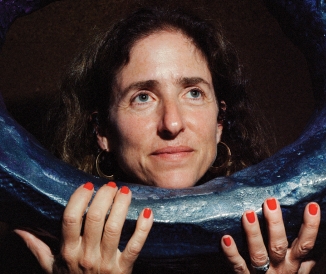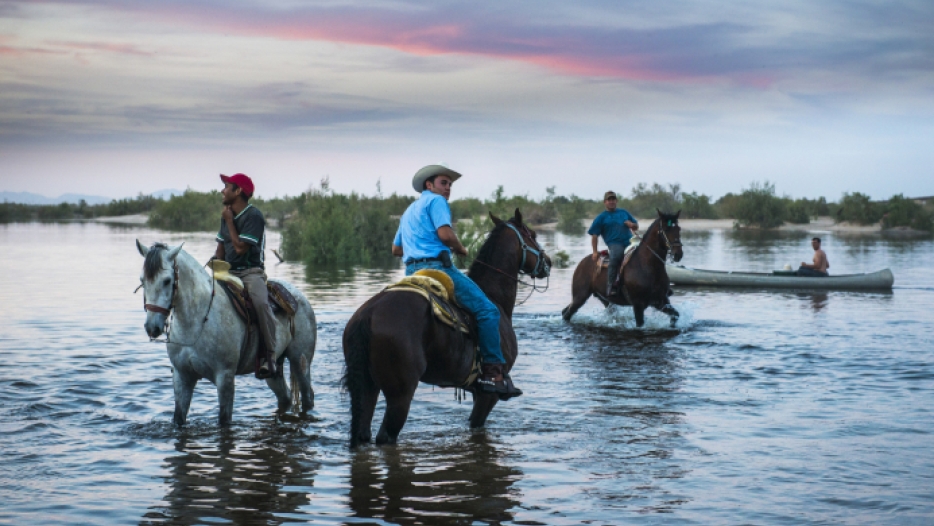
Rio Reborn Local cowboys come to what is typically a river of sand to welcome their new guest: agua. The binational agreement to release water for the environment in 2014 was the first of its kind among the 260 rivers that cross international boundaries.
View full image
1 / 12
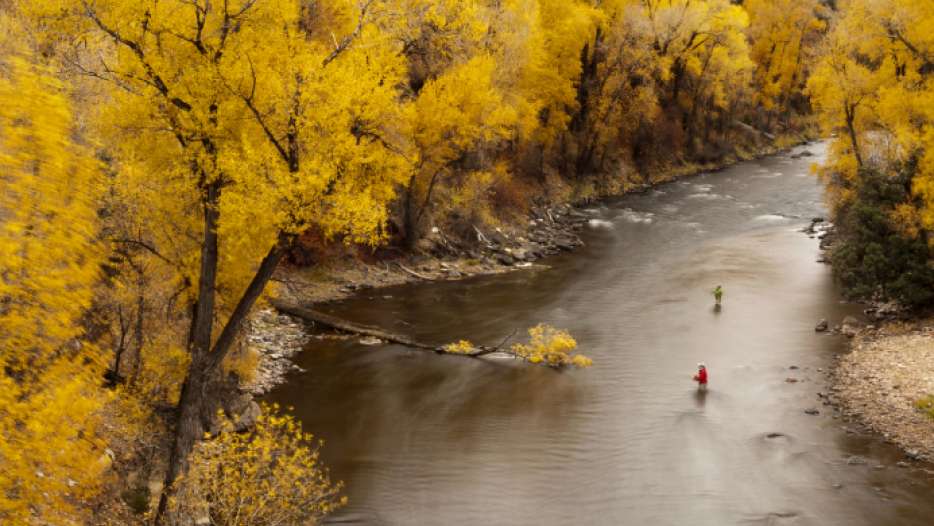
Fall Flow Throughout the Colorado River Basin, gold medal fishing waters—like those of the Roaring Fork River near Basalt, Colorado—lure anglers and many river-related businesses.
View full image
2 / 12
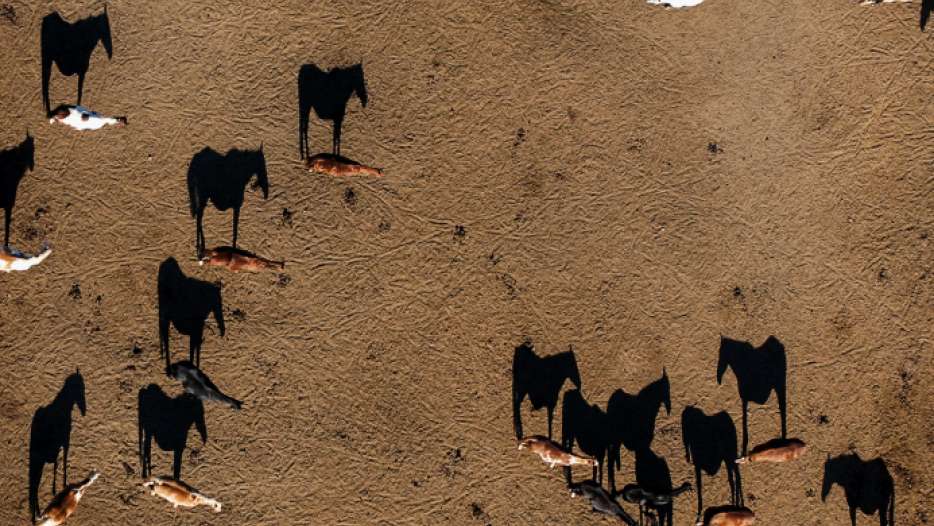
Shadowed Sentinels Horses in the headwaters and throughout the basin depend upon hay, the predominant crop of the river. Collectively, agriculture consumes more than 70 percent of the Colorado River’s water. While flying at 600 feet near the headwaters in Colorado, McBride yelled, “Bank, bank, bank!” at his father the pilot, who banked the Cessna 180 degrees up on one wing in order to get the right perspective.
View full image
3 / 12

Industry on the Banks of the Colorado Settling ponds southwest of Moab use dyed-blue Colorado River water to increase evaporation for the processing of potash. The mineral is mined from salt formations 3,000 feet below the Canyonlands and transported out by rail to be made into fertilizer.
View full image
4 / 12
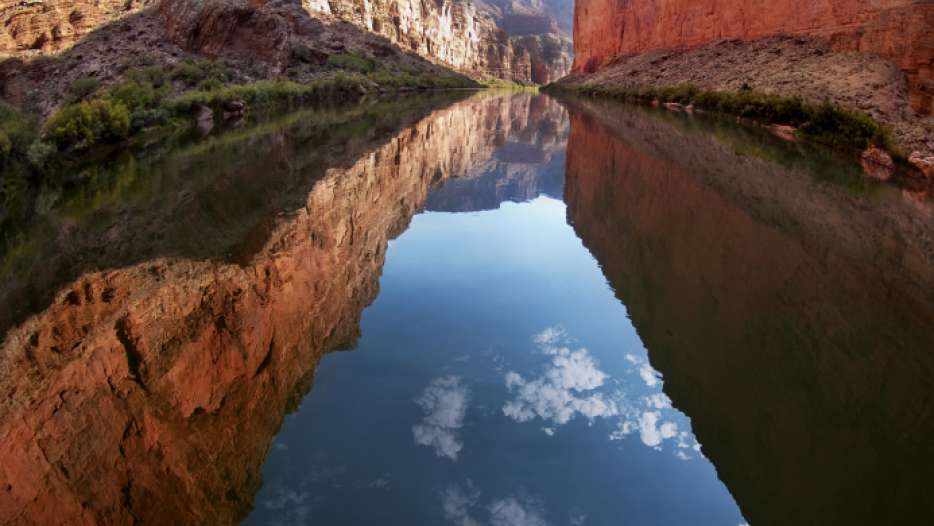
Marble Canyon Downstream from Lees Ferry and below the Navajo Reservation, water flows serenely through Marble Canyon in the upper Grand Canyon. In the late 1960s, Sierra Club Director David Brower defeated a proposed dam here. His media campaign financed full-page ads in national newspapers, including: “Now Only You Can Save Grand Canyon From Being Flooded ... For Profit.” Exploratory drill holes from the aborted project can still be found in the Redwall Limestone.
View full image
5 / 12
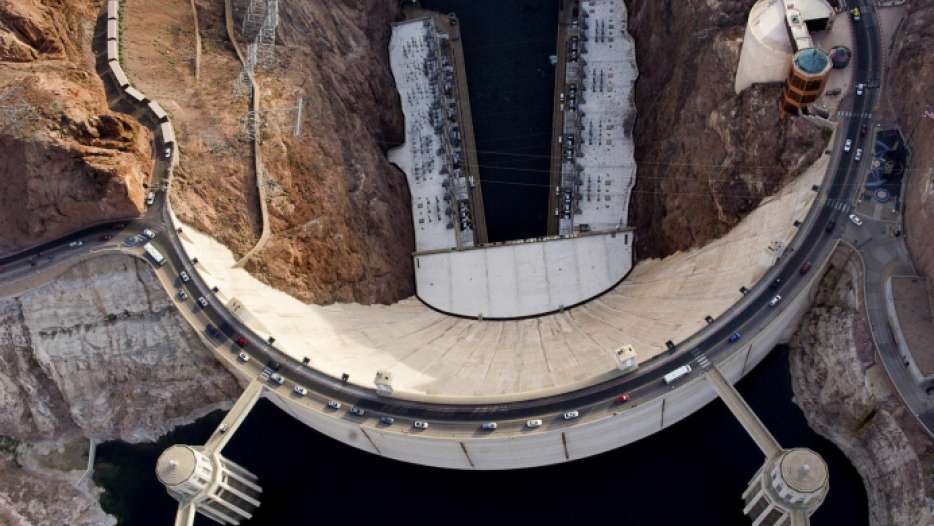
Hoover Dam Last summer, Lake Mead, the reservoir created by Hoover Dam, reached its record low water mark at 39 percent. Completed in 1936, this 70-story dam was the greatest manmade structure after the Wall of China. For two decades it also reigned as the largest power plant. Built “to make the desert bloom,” the dam faces a diminishing river due to climate change, urban growth and overallocation. If the ongoing drought lowers the reservoir another 50 feet, the hydroelectric turbines will be inoperable.
View full image
6 / 12
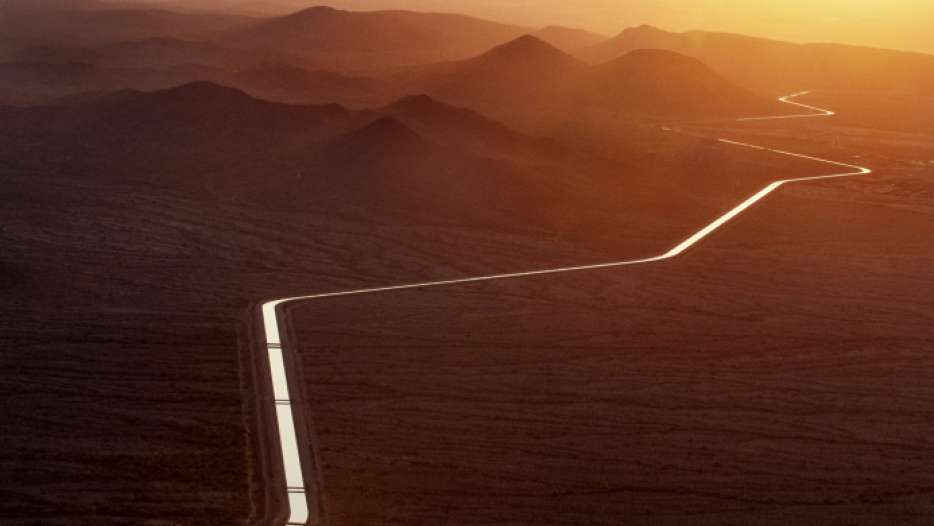
Central Arizona Project In 1968, after four decades of lawsuits, the federal government allowed the desert state its $3.6 billion Central Arizona Project (the state has 50 years to repay the U.S. Treasury $1.7 billion of the total). The canal pumps Colorado River water out of Lake Havasu and 336 miles east and uphill to supply Phoenix, Tucson and 12 sets of aquifer recharge ponds due to a depleted water table.
View full image
7 / 12
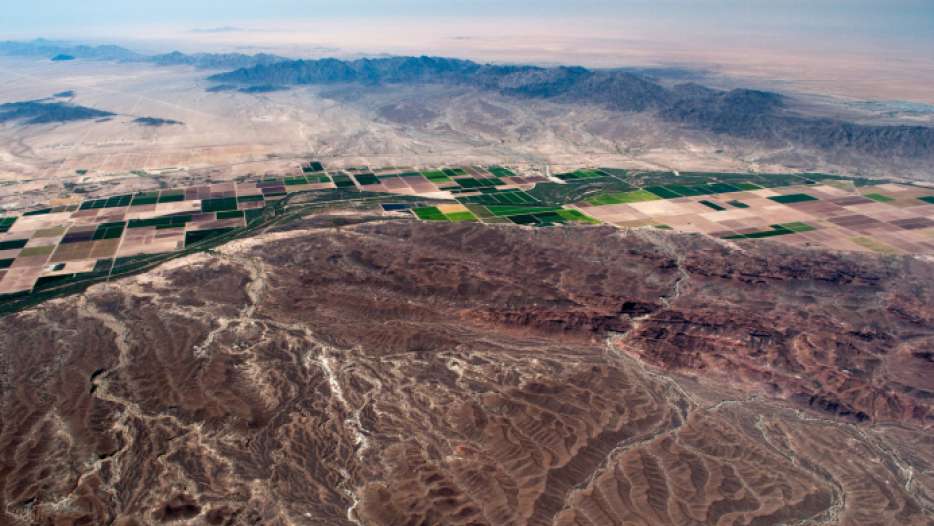
Gila River The last major tributary of the Colorado River, the Gila River, runs dry today and is only a strip of green agricultural lands as it winds through the Sonoran desert in Arizona just north of Mexico.
View full image
8 / 12
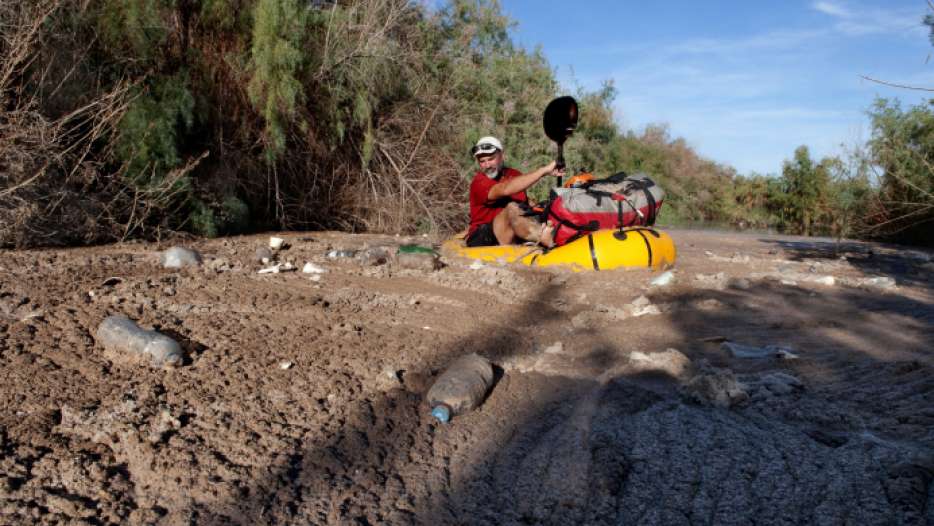
End of a River Jon Waterman, who paddled the entire 1450 miles of the Colorado, comes to the river’s unnatural end, two miles into Mexico, trapped in tamarisk and a cesspool of plastic, fertilizers and mud. (He completed his journey on foot accompanied by McBride). By the time the Colorado River reaches its delta, its water has been re-used eight times.
View full image
9 / 12
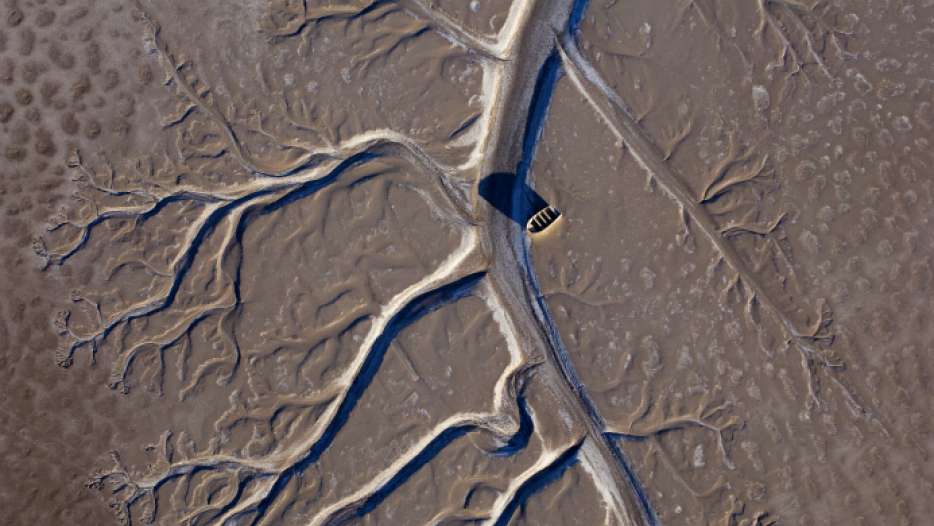
Dry Artery A Cucapá’s (person of the river) fishing boat sits abandoned in delta mudflats where ancestral fishing once supported 20,000 Native Americans. Now 1,500 Kwapa (Cucapá and Cocopah) on either side of the border depend on casinos, farming and odd jobs for employment. Fishing is illegal in the protected ocean water of the Upper Gulf of California and Colorado River Delta Biosphere Reserve, but many test their luck with the law.
View full image
10 / 12

Walking the Delta Waterman walks the cracked, dry earth of the Colorado River Delta, once the largest estuary in North America. Due to overallocation, it is a river of sand today.
View full image
11 / 12
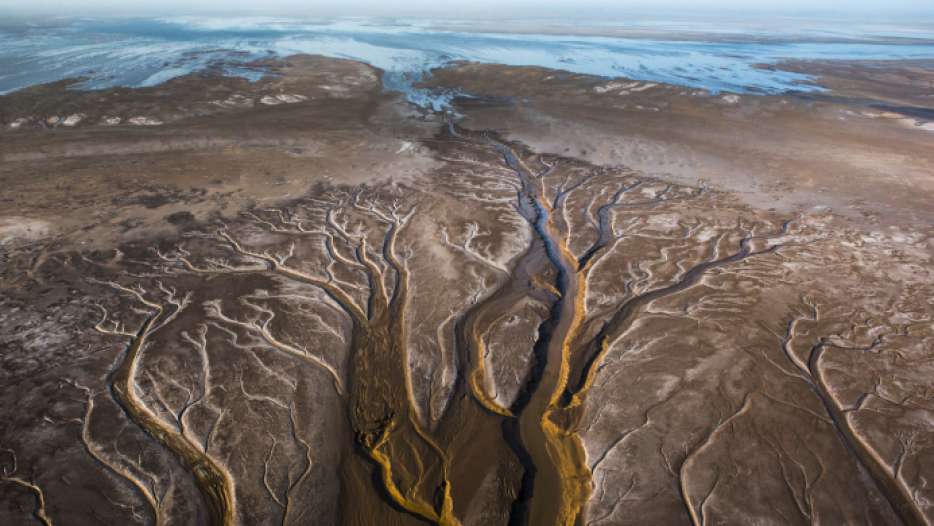
Kissing the Sea For the first time in nearly two decades, the Colorado River kissed the Sea of Cortez in May 2014. The river ran to the sea for six million years, but overconsumption dried the river completely in 1998. Another pulse flow will be negotiated between the U.S. and Mexico in five years. In the meantime, a small base flow will support the fauna that spawned last spring.
View full image
12 / 12
Displaying 1 - 12 of 12.


